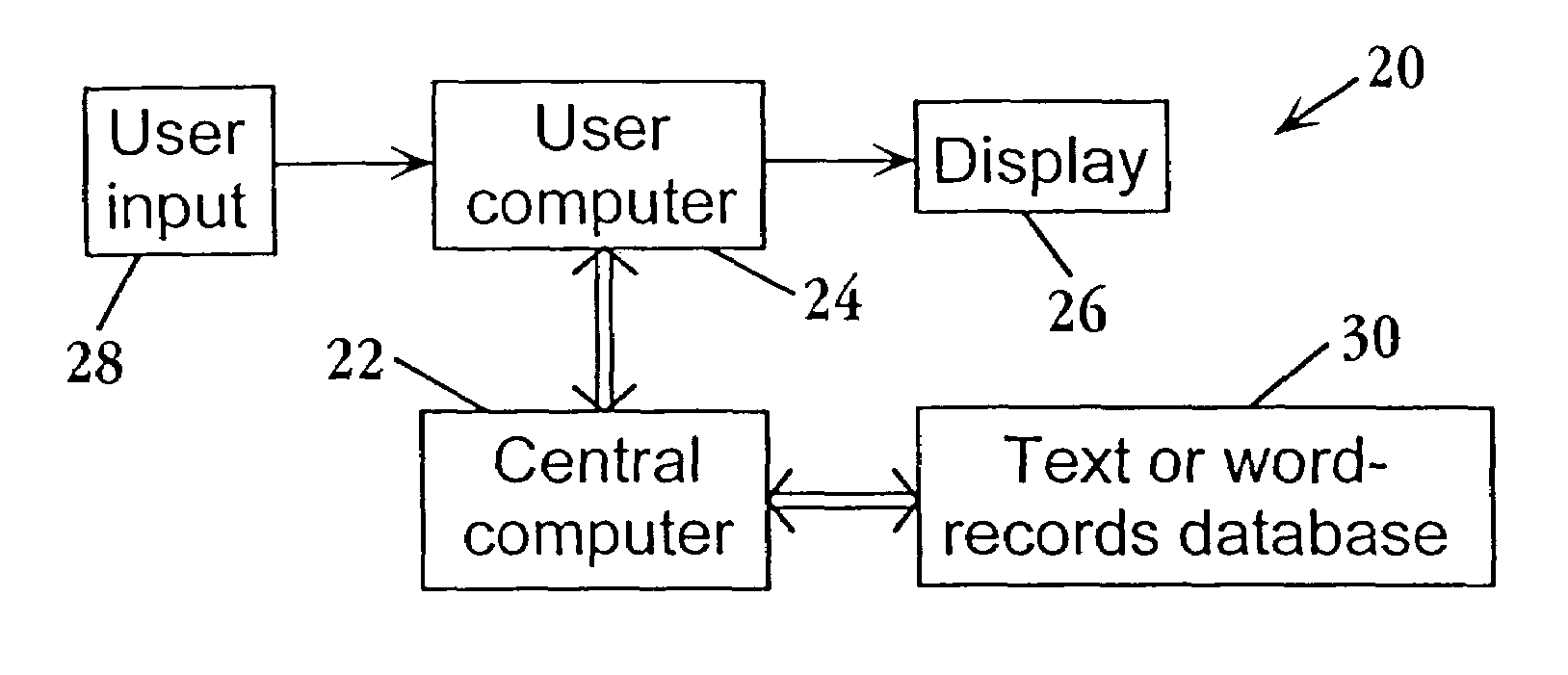Code, system and method for representing a natural-language text in a form suitable for text manipulation
a natural language text and text technology, applied in the field of text representation, can solve problems such as hampered applicability
- Summary
- Abstract
- Description
- Claims
- Application Information
AI Technical Summary
Benefits of technology
Problems solved by technology
Method used
Image
Examples
example 1
Optimizing Search Vector Coefficients Based on Classification
[0224]Initially, 30 of the 164 patents were selected at random to determine preferred root function and optimal value of n, the number of top-ranked texts considered for classification. The results are shown in FIGS. 19A and 19B, respectively. Both of these figures contain three sets of four bars. In each set, the first bar represents the percentage of first-choice (top) classifications that are identical to the PTO office classes (light shading), or are identical to one of the PTO cross classes (heavy shading). The second and third bars represent the percentage of second- and third-choice classifications, respectively, that are identical to the PTO office classes (light shading), or are identical to one of the PTO cross classes (heavy shading). The fourth bar represents the percentage of op-three choices that do not correspond to either an office class or subclass. As seen in FIG. 16A, the best classification results are ...
example 2
Using Performance Feedback to Construct Model Collections
[0225]Five patent abstracts were processed by the system to yield 10 top-ranked primary matches. The most pertinent of these were user selected, and a refined search based on a recalculated search was performed to yield up to 10 top-ranked texts. This group of texts established, for each target, a standard set of most-pertinent references. The system was then run on the same five targets, but where the search vector coefficients included selectivity value (SV) along, IDF alone, or the two together. The results from each of these three searches were then compared with the standard set for each of the five targets, with the results shown in FIG. 18. Each bar in the graph represents the percentage of top-ranked hits also present in the standard, and identifies the match numbers. Thus, for example, in the first target group (three bars at the left in the figure), a search with SV alone yielded 20% of the standard set (1 out of fiv...
example 3
Classification Results as a Function of Search Vector Coefficients
[0226]In this text, 150 patent abstracts were classified by the system, employing six different search vector combinations, as indicated in the key in FIG. 20. The first three vectors used both word and wordpair terms, and the second three, word terms alone. In each set, the coefficients used were either SV+IDF, or DV or IDF alone. The classification results are presented in FIG. 20, showing, for each set, exact class and subclass match with the PTO office classification, top class match among the top three choices, and no corresponding classification. As seen, best classification results were achieved with word and word pair terms, using both SV+IDF or SV alone. However, the data presented Example 2 above indicates that the best search results are obtained using both SV+IDF in the word coefficients.
PUM
 Login to View More
Login to View More Abstract
Description
Claims
Application Information
 Login to View More
Login to View More - R&D
- Intellectual Property
- Life Sciences
- Materials
- Tech Scout
- Unparalleled Data Quality
- Higher Quality Content
- 60% Fewer Hallucinations
Browse by: Latest US Patents, China's latest patents, Technical Efficacy Thesaurus, Application Domain, Technology Topic, Popular Technical Reports.
© 2025 PatSnap. All rights reserved.Legal|Privacy policy|Modern Slavery Act Transparency Statement|Sitemap|About US| Contact US: help@patsnap.com



